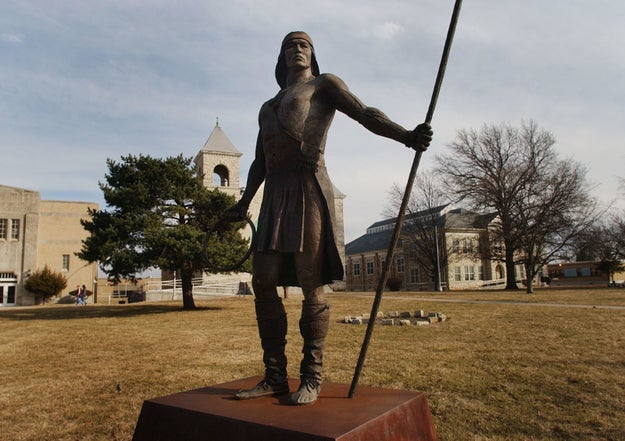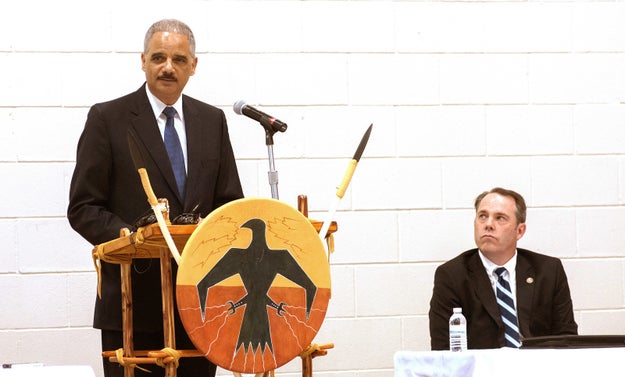Native American Colleges Have Abandoned The Student Loan System
With graduates defaulting on their loans at sky-high rates, the vast majority of America’s 32 tribal colleges have stopped their students from borrowing.

The campus of Haskell Indian Nations University in Lawrence, Kansas. Orlin Wagner / AP
By the time United Tribes Technical College was named the fourth-worst school in the country for student loan defaults last week, the tribal school had already made it impossible for students to borrow money from the federal government. For United Tribes Tech, cutting off the student loan spigot was a last resort — the only way to save itself from government penalties that would bring financial ruin.
But it also meant that of America’s 32 tribal colleges — schools controlled by Native American tribes — only three now allow federal loans for their students. It’s a particularly striking situation, because tribal colleges, which are funded by the federal government, serve some of the country’s neediest students.
Nationwide, 90% of community colleges offer federal student loans to students. And advocacy groups have decried the other 10% for denying their students the ability to borrow.
But the vast majority of tribal colleges have cut off access to the loans. That’s in part because colleges fear the consequences of too many students defaulting on their loans, said Carrie Billy, the president of the American Indian Higher Education Consortium, a lobbying group.
But Billy told BuzzFeed News that most tribal schools also firmly believe their students are better off without federal loans of any kind — so much so that they have decided not even to make them an option.
“We completely disagree with that idea that students are worse off without [access to] federal loans,” Billy said. “Particularly when you look at the demographics of our students — students who have lived with generational poverty, unemployment, who have no experience with credit — that’s a recipe for disaster when it comes to loans. Tribal colleges will do everything they can to make their students graduate debt-free.

Former Attorney General Eric Holder speaking at United Tribes Technical College in 2014. Kevin Cederstrom / AP
Tribal colleges, like community colleges, are relatively inexpensive — around $6,000 a year, low enough that a $5,750 annual Pell Grant will cover most of the cost of tuition. But community college students sometimes borrow money to help pay for living costs and expenses like textbooks. That option isn’t available for tribal college students.
Those students often face staggering obstacles that make them more less likely to repay student debt, Billy said. Eighty-three percent of them are reliant on Pell Grants, which are only given to low-income students, compared to just 40% of college students nationally. Many tribal college students have little to no experience with borrowing money or credit. They’re also mostly first-generation college students.
Instead of offering loans, tribal colleges try to fill the gap themselves, by providing Native American Colleges Have Abandoned The Student Loan System - BuzzFeed News:
